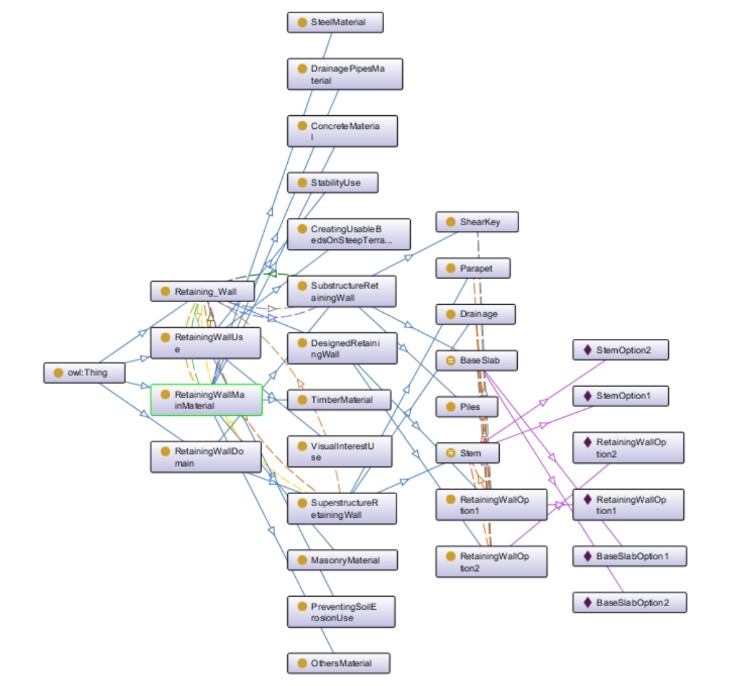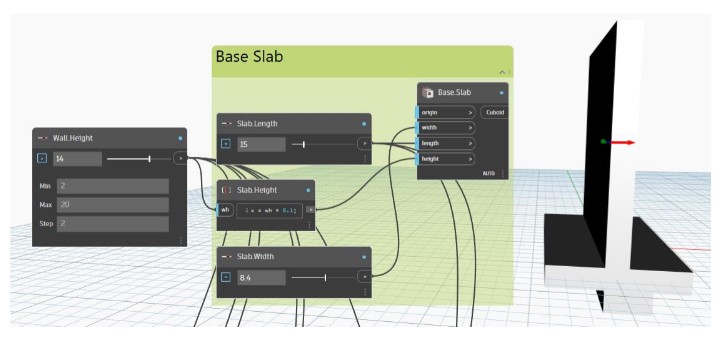Ontological Modelling
Domain and Scope:
The development of an ontology is a long process. However, its length depends on the purpose for which it is designed. Therefore, the first step in developing an ontology is to define its domain and scope. The domain selected in this project is Cantilever Retaining Wall. The intended purpose of this ontology is to describe the physical structure and the uses of the cantilever retaining wall. Therefore, the scope of the ontology includes the different types of physical components, the material used for construction, and the possible uses of a retaining wall.
Intended end-users:
The designers and engineers are involved in the design process.
Intended Use:
The major use of a retaining wall is the prevention of soil erosion. Some other uses include the stability of slope surfaces and the creation of usable beds on steep terrain.
Physical Components:
Represent the main focus of the retaining wall. The physical component can be split into mainly two parts: substructure and superstructure.
Main Materials:
It includes mainly the materials used in the stem and the base slab. Since a cantilever retaining wall is made of reinforced concrete the main materials include concrete, steel, and some other materials which can also be used in the construction of a retaining wall.
Visualization of Ontology:
Parametric Modelling
The retaining wall is modelled in Dynamo BIM using the concept of cuboids. Three cuboids were drawn which model the vertical wall, shear key and base slab as given below. The position and dimensions of the shear key depend on the wall height and are automated using code blocks. Similarly, the height of the base slab and the position of the vertical wall are also automated based on the wall height.
High-Performance Criteria:
The high-performance criteria selected to assess the performance of the model are:
• The height of the vertical wall and the width of the base slab
• Length of the retaining wall

